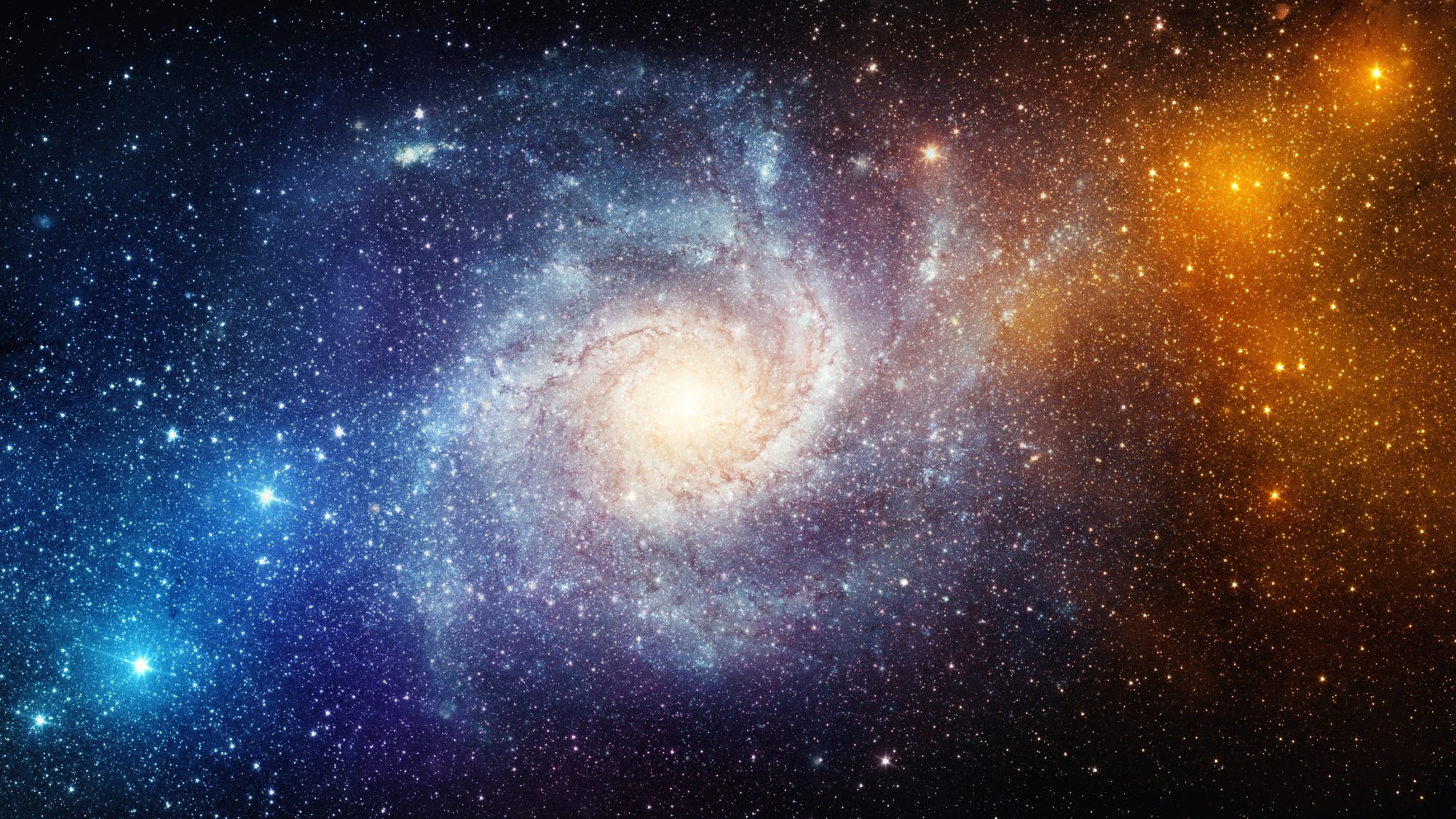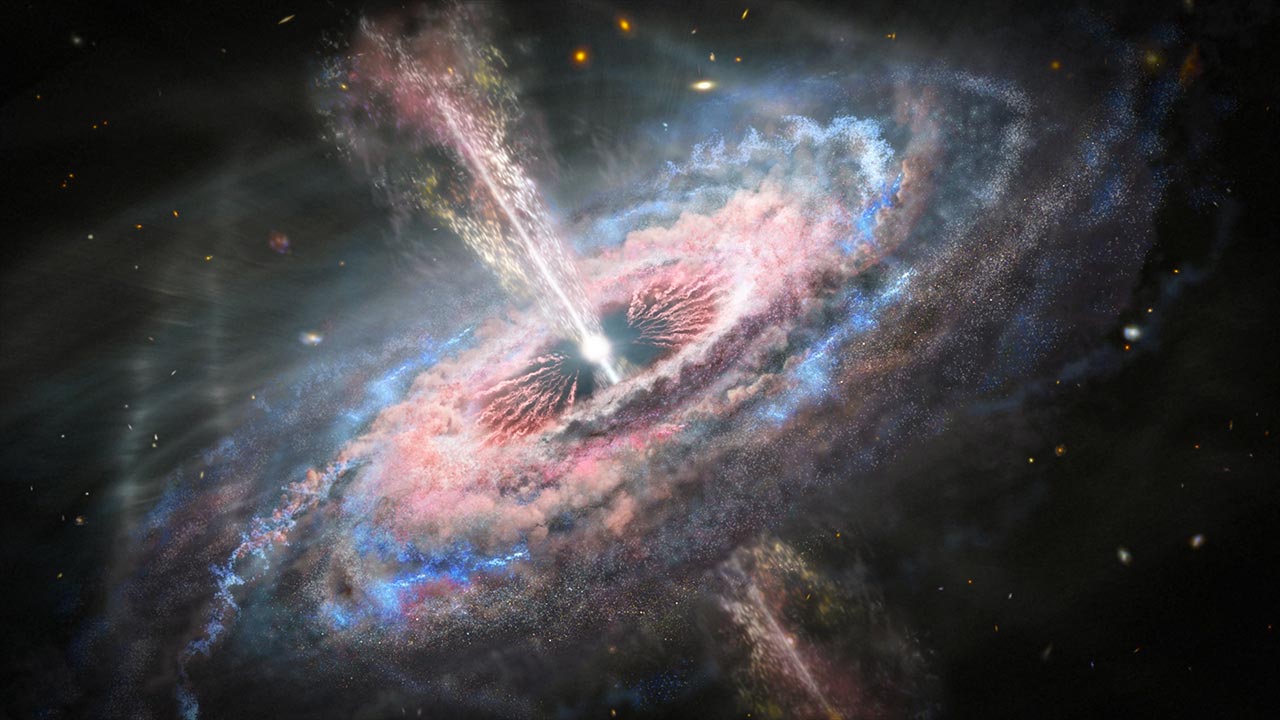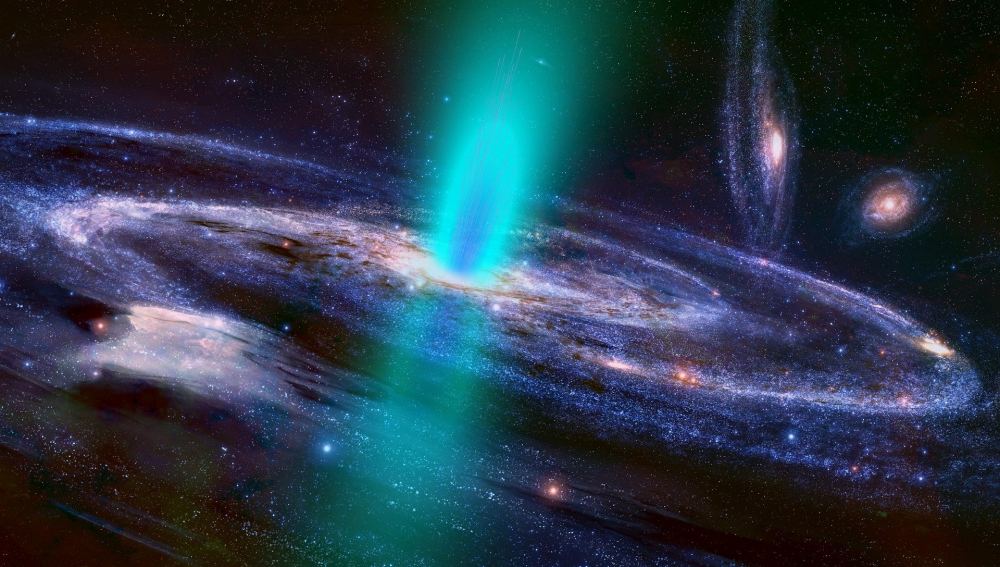Introduction
What Is The Cosmological Redshift: The cosmological redshift is a fundamental concept in the field of astrophysics and cosmology that plays a pivotal role in our understanding of the universe’s expansion and the Big Bang theory. It is a phenomenon observed when light from distant galaxies and cosmic objects appears to shift toward longer wavelengths, or the red end of the electromagnetic spectrum, as it travels through space. This redshift effect has profound implications for our comprehension of the cosmos, providing critical evidence for the expansion of the universe and allowing scientists to trace its history and evolution.
The concept of cosmological redshift is rooted in the Doppler effect, a principle that describes how the wavelength of light or sound waves changes when the source of those waves is in motion relative to an observer. In the context of cosmology, this effect occurs because galaxies and other cosmic objects are not static; they are in constant motion within the expanding fabric of space itself. As these celestial objects move away from us, the light they emit becomes stretched, causing a shift towards the red end of the spectrum, and this shift is proportional to the object’s velocity relative to our observation point.

The cosmological redshift was first observed by astronomer Edwin Hubble in the 1920s when he noticed a correlation between the redshift of light from distant galaxies and their increasing distance from Earth. Hubble’s groundbreaking discovery provided strong evidence that the universe was not static but expanding, challenging the prevailing belief in a static, unchanging cosmos. This pivotal observation led to the formulation of Hubble’s Law, which quantifies the relationship between the redshift of light and the distance to galaxies, fundamentally altering our understanding of the universe’s dynamics and evolution.
In this exploration of the cosmological redshift, we will delve deeper into its underlying principles, its role in supporting the Big Bang theory, and its significance in shaping our modern understanding of the cosmos. We will also explore the various applications of redshift measurements in cosmology, such as determining the age and size of the universe, and its ongoing relevance in unraveling the mysteries of the universe’s past, present, and future.
What is meant by cosmological redshift?
The universe is expanding, and that expansion stretches light traveling through space in a phenomenon known as cosmological redshift. The greater the redshift, the greater the distance the light has traveled.
Cosmological redshift is a phenomenon in astrophysics and cosmology that describes the shifting of light from distant objects in the universe toward the longer-wavelength, or “red,” end of the electromagnetic spectrum. This shift occurs because the universe is expanding, causing the space between objects (such as galaxies or quasars) and an observer on Earth to also expand. As a result, the light emitted by these distant objects undergoes a stretching of its wavelengths as it travels through the expanding space, causing it to shift from shorter (bluer) wavelengths to longer (redder) wavelengths.
The concept of cosmological redshift was first observed by Edwin Hubble in the early 20th century and has since become a fundamental tool in our understanding of the universe’s structure and expansion. This phenomenon is a key piece of evidence supporting the Big Bang theory, as it suggests that galaxies are moving away from each other as the universe continues to expand.
In essence, cosmological redshift provides astronomers and cosmologists with a way to measure the recession velocity of objects in the universe, enabling them to map the expansion rate of the cosmos and estimate its age. It plays a pivotal role in our understanding of the large-scale structure and dynamics of the universe and has led to significant discoveries in the field of astrophysics.
What is an example of a red shift?
Scientists can use redshift to measure how the universe is structured on a large scale. One example of this is the Hercules-Corona Borealis Great Wall; light takes about 10 billion years to go across the structure.
An example of a redshift in astronomy is the spectral lines of distant galaxies or celestial objects moving away from us. This phenomenon occurs because of the Doppler effect, a fundamental concept in physics. When an object in space is moving away from an observer (like us on Earth), the light it emits or reflects gets stretched, causing a shift in its wavelength towards the longer, redder end of the electromagnetic spectrum.
For instance, when astronomers observe the light from distant galaxies through a spectroscope, they often find that the characteristic lines in the spectrum, such as the hydrogen Balmer lines, are shifted towards the red part of the spectrum. The greater the redshift, the faster the object is moving away from us.
This redshift phenomenon provides crucial evidence for the expansion of the universe, as first observed by Edwin Hubble. The redshift of distant galaxies, combined with their recession velocities, led to the development of the Hubble-Lemaître Law, which demonstrates that the universe is continuously expanding. In essence, the redshift serves as a cosmic odometer, allowing astronomers to measure the distances and relative velocities of celestial objects and to gain insights into the universe’s dynamic evolution.
Why is cosmological redshift important?
Bottom line: A redshift reveals how an object in space (star/planet/galaxy) is moving compared to us. It lets astronomers measure a distance for the most distant (and therefore oldest) objects in our universe.
Cosmological redshift is of paramount importance in the field of astrophysics and cosmology for several compelling reasons. Firstly, it serves as a critical piece of evidence substantiating the Big Bang theory, which is the prevailing model explaining the origin of our universe. The redshift phenomenon, observed by Edwin Hubble in the early 20th century, is a direct consequence of the expansion of the cosmos. As the universe expands, it stretches the wavelengths of light, causing them to shift towards the red end of the electromagnetic spectrum. This redshift provides concrete proof that the universe is not static but has been evolving over time.
Cosmological redshift allows scientists to measure the velocity at which galaxies are receding from one another. This information is fundamental in constructing the cosmic timeline and estimating the age of the universe. By tracing the history of cosmic expansion, we can infer that the universe is approximately 13.8 billion years old.

The concept of cosmological redshift has been instrumental in our understanding of dark energy, a mysterious force driving the accelerated expansion of the universe. It plays a pivotal role in shaping the large-scale structure of the cosmos, influencing the distribution of galaxies and galaxy clusters.
In essence, cosmological redshift is vital because it not only validates our cosmological theories but also provides crucial data for deciphering the universe’s past, present, and future. It has revolutionized our comprehension of cosmic dynamics and continues to be an indispensable tool in the pursuit of unlocking the mysteries of the universe.
What is the cosmological red shifting?
Ever since 1929, when Edwin Hubble discovered that the Universe is expanding, we have known that most other galaxies are moving away from us. Light from these galaxies is shifted to longer (and this means redder) wavelengths – in other words, it is ‘red-shifted’.
Cosmological redshift, a fundamental concept in astronomy and cosmology, refers to the phenomenon where light from distant objects in the universe appears shifted toward longer wavelengths, typically the red end of the electromagnetic spectrum. This shift occurs because of the expansion of the universe.
When an object, such as a galaxy, is moving away from an observer, the light it emits is stretched as the universe expands. This stretching causes the light’s wavelength to increase, making it shift toward the red end of the spectrum, hence the term “redshift.” Conversely, when an object moves closer to an observer, its light experiences a blueshift, shifting toward shorter wavelengths.
The cosmological redshift is a crucial piece of evidence supporting the Big Bang theory. Edwin Hubble’s observations in the early 20th century showed that galaxies in every direction were redshifted, indicating that the universe is not static but expanding. This expansion began with the Big Bang, a hot and dense initial state from which the cosmos originated.
Scientists use the magnitude of redshift to determine the recessional velocity of objects and, consequently, to map the rate of cosmic expansion. Cosmological redshift has thus become a foundational tool in understanding the history, structure, and dynamics of the universe, helping us uncover its age, evolution, and the existence of dark energy, which drives its accelerated expansion.
How does cosmological redshift provide evidence for the expanding universe?
Cosmological redshift serves as compelling evidence for the expanding universe by demonstrating that galaxies and other cosmic objects are moving away from us and from each other. This phenomenon was first observed by Edwin Hubble in the early 20th century and has since become a cornerstone of modern cosmology.
When light from distant galaxies reaches us, it often appears “redshifted,” meaning that the wavelengths of the light have been stretched and shifted toward the red end of the electromagnetic spectrum. This redshift occurs because the universe is expanding. As galaxies move away from each other due to the expansion of space itself, the light they emit gets stretched during its journey to us, causing the observed redshift.
Hubble’s groundbreaking observations revealed a direct correlation between the redshift of light from distant galaxies and their distance from Earth. This relationship, known as Hubble’s Law, shows that the farther a galaxy is from us, the greater its redshift and, consequently, the faster it is receding. This empirical evidence strongly supports the idea that the universe is not static but instead expanding, as galaxies are moving away from each other in a manner consistent with an initial cosmic explosion, commonly referred to as the Big Bang.
In essence, the cosmological redshift provides tangible proof that the universe is in a state of dynamic expansion, offering profound insights into its history and evolution, and underpinning the foundational framework of modern cosmology.
What is the relationship between the cosmological redshift and the Big Bang theory?
The relationship between the cosmological redshift and the Big Bang theory is pivotal in understanding the origin and expansion of the universe. The cosmological redshift is a phenomenon observed in the light from distant galaxies, whereby the wavelengths of this light are stretched, causing it to shift towards the red end of the electromagnetic spectrum. This shift is a consequence of the expansion of the universe itself.
In the context of the Big Bang theory, the cosmological redshift serves as a compelling piece of evidence. It suggests that galaxies are moving away from us and from each other, indicating that the universe is not static but instead expanding. Edwin Hubble’s groundbreaking observations in the early 20th century confirmed this redshift in light from distant galaxies, leading to the realization that the universe is continually evolving.
The key implication here is that if galaxies are moving away from each other today, they must have been much closer together in the past. Extrapolating backward in time, scientists can envision a moment when all matter and energy in the universe were concentrated in an incredibly hot and dense state—the primeval singularity. This is the essence of the Big Bang theory: the universe originated from this singularity approximately 13.8 billion years ago and has been expanding ever since.
The cosmological redshift is an essential component of the Big Bang theory, providing observational support for the idea that the universe began as a singular point and has been expanding, evolving, and cooling over billions of years. It stands as a cornerstone in our understanding of the universe’s origin and its ongoing transformation.

How do scientists use the cosmological redshift to estimate the age of the universe?
Scientists use the cosmological redshift as a crucial tool to estimate the age of the universe through a method known as the Hubble-Lemaître law. This law is named after the astronomers Edwin Hubble and Georges Lemaître, who made significant contributions to our understanding of cosmic expansion.
The cosmological redshift is a result of the universe’s expansion, causing galaxies to move away from each other. As they recede, the light they emit becomes stretched, shifting its wavelengths toward the red end of the electromagnetic spectrum. The amount of redshift observed in the light from distant galaxies is directly proportional to their recessional velocity. This relationship is expressed by the Hubble-Lemaître law, which states that the velocity of a galaxy’s recession (v) is equal to a constant (Hubble’s constant, denoted as H0) multiplied by its distance from us (d).
By measuring the redshift (z) of light from various distant galaxies and determining their distances, scientists can calculate the value of Hubble’s constant. Once H0 is known, it can be used to estimate the age of the universe through the inverse of the Hubble time (1/H0). This provides an estimate of when the expansion of the universe began, commonly referred to as the age of the universe.
By applying this method, scientists have estimated that the age of the universe is approximately 13.8 billion years, a crucial piece of information in our quest to understand the cosmos and its origins.
What role does the concept of cosmological redshift play in our understanding of dark energy’s influence on cosmic expansion?
The concept of cosmological redshift plays a pivotal role in our comprehension of dark energy’s profound influence on the expansion of the cosmos. Cosmological redshift, observed as the stretching of light wavelengths from distant galaxies as they move away from us, is a direct consequence of the universe’s expansion.
Dark energy, a mysterious and repulsive force, was postulated to explain the accelerated expansion of the universe, a discovery made possible in part by the precise measurement of cosmological redshift. In the late 1990s, astronomers studying distant supernovae found that the rate of cosmic expansion was actually increasing over time, contrary to previous expectations. This unexpected acceleration was a groundbreaking revelation.
Cosmological redshift data, combined with other observations and theoretical models, led to the conclusion that dark energy makes up a significant portion of the universe’s energy density. It is this dark energy that counters the gravitational attraction between matter and drives galaxies apart at an ever-increasing rate.
Therefore, cosmological redshift serves as a critical tool for quantifying the expansion rate of the universe and, subsequently, for estimating the energy content of dark energy. It has fundamentally reshaped our understanding of the universe’s fate, suggesting that it will continue expanding at an accelerating pace, ultimately leading to a future where galaxies become increasingly distant from one another. In essence, the concept of cosmological redshift has illuminated the role of dark energy as a dominant force shaping the destiny of our cosmos.

Conclusion
The cosmological redshift is a fundamental concept in the field of astrophysics and cosmology, providing key insights into the nature and evolution of our universe. This phenomenon, first observed by Edwin Hubble in the early 20th century, reveals that galaxies are not static in space but are, in fact, moving away from each other. The redshift occurs as the universe expands, stretching the wavelengths of light emitted by distant objects and shifting them toward the red end of the electromagnetic spectrum.
The cosmological redshift is a critical piece of evidence supporting the Big Bang theory, which posits that the universe originated from a hot and dense state approximately 13.8 billion years ago. As the universe expanded from this initial singularity, galaxies and cosmic structures formed, and they have been moving apart ever since. The redshift of light from distant galaxies provides a measure of their recessional velocity, allowing scientists to map the expansion rate of the universe and estimate its age.
The concept of redshift has paved the way for the discovery of dark energy, a mysterious force responsible for the accelerated expansion of the universe. This enigmatic force, combined with dark matter, shapes the large-scale structure of the cosmos and continues to be a subject of intense research and exploration in the field of cosmology.
In essence, the cosmological redshift serves as a crucial tool for understanding the universe’s past, present, and future. It has revolutionized our understanding of cosmic dynamics, the age of the universe, and the underlying forces driving its expansion. As technology advances and our knowledge deepens, the study of redshift and its implications will undoubtedly continue to play a central role in unraveling the mysteries of our vast and ever-evolving cosmos.



